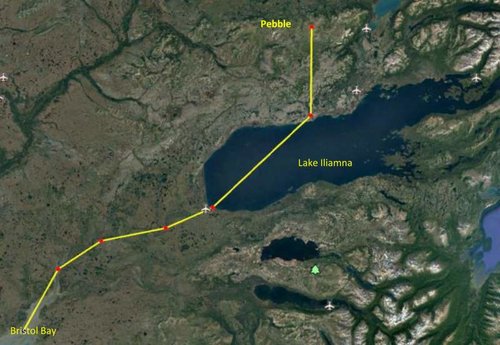A very nice video presentation from CNN on the ANWR and Bristol Bay public lands fight.
https://www.cnn.com/interactive/2018/07/us/alaska-crossroads-weir/index.html
Folks, it is getting to be a binary decision on Public Lands. A bright red line has been drawn by Zinke and the DJT administration.
Each and everyone of us Sportsmen and Sportswomen, have to decide.
For me it is easy, I am on the side of Public Lands, including my vote in November. For those on the other side, I respect your decision, but accept that decision and the consequences that it will have on Public Lands.
When you step onto the side of Public Lands, you have committed to what is most important to you and may have to sacrifice some other issues. For those who step to the side of the Extraction Industry and this administrations anti Public Lands policies, you have decided that other things are more important than Public Lands.
In today's world, for some the Truth is optional. That Truth comes from their tribe only. For me as an engineer, I know there is one truth and that is: what is the EFFECT of the decisions and actions taken.
All the bluster on Forums, all the propaganda on the media, all the spin and outright lies from this administration, they really don't amount to much.
But, when the D-9's start ripping ground on the ANWR, when the chainlink fence starts going up around Bristol Bay, when the big rigs start staging on the newly pushed roads, when exploratory oil rigs show up in our National Monuments, when land owners start stretching barbed wire across your favorite trout stream, when they doze coal ash into your favorite Chukar canyon, when the Sage Grouse goes the way of the Passenger Pigeon, when small family ranches are bought up by multinational conglomerates who run the business from an LLC in the Bahamas, when the air in that remote desert basin turns from crystal blue to coal power-plant brown, that is the EFFECT of anti Public Lands actions and policies.
Which side of that bright red line will you be on?
Cheers,
Mark
Ye Shall Be Free To Roam.....
https://www.cnn.com/interactive/2018/07/us/alaska-crossroads-weir/index.html
Folks, it is getting to be a binary decision on Public Lands. A bright red line has been drawn by Zinke and the DJT administration.
Each and everyone of us Sportsmen and Sportswomen, have to decide.
For me it is easy, I am on the side of Public Lands, including my vote in November. For those on the other side, I respect your decision, but accept that decision and the consequences that it will have on Public Lands.
When you step onto the side of Public Lands, you have committed to what is most important to you and may have to sacrifice some other issues. For those who step to the side of the Extraction Industry and this administrations anti Public Lands policies, you have decided that other things are more important than Public Lands.
In today's world, for some the Truth is optional. That Truth comes from their tribe only. For me as an engineer, I know there is one truth and that is: what is the EFFECT of the decisions and actions taken.
All the bluster on Forums, all the propaganda on the media, all the spin and outright lies from this administration, they really don't amount to much.
But, when the D-9's start ripping ground on the ANWR, when the chainlink fence starts going up around Bristol Bay, when the big rigs start staging on the newly pushed roads, when exploratory oil rigs show up in our National Monuments, when land owners start stretching barbed wire across your favorite trout stream, when they doze coal ash into your favorite Chukar canyon, when the Sage Grouse goes the way of the Passenger Pigeon, when small family ranches are bought up by multinational conglomerates who run the business from an LLC in the Bahamas, when the air in that remote desert basin turns from crystal blue to coal power-plant brown, that is the EFFECT of anti Public Lands actions and policies.
Which side of that bright red line will you be on?
Cheers,
Mark
Ye Shall Be Free To Roam.....






